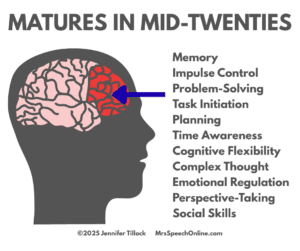
Hey there, fellow educators! Today, let’s dive into a topic that’s near and dear to our hearts: supporting students with slow processing speed in the classroom. We all know that every student learns at their own pace. It’s our job to ensure that everyone gets the support they need to succeed. So, grab your favorite mug of coffee or tea, and let’s explore some coping strategies together!
Understanding Slow Processing Speed
First things first, what exactly is slow processing speed? Essentially, it’s like having a little lag time in processing information. Whether it’s following instructions, completing tasks, or participating in discussions, students with slow processing speed may need a bit more time to absorb and respond to what’s happening around them.
Signs of Slow Processing Speed

Keep an eye out for signs like taking longer to complete assignments, needing extra time to process verbal instructions, or struggling to keep up with fast-paced classroom activities. Students with slow processing speed may frequently answer classroom discussion questions with “I don’t know.” Or they may look like they are ignoring the question. Recognizing these signs early on can help us tailor our support strategies to meet each student’s unique needs.
Coping Strategies for Speech Pathologists and Teachers
Visual Aids for the Win
Incorporate visual aids like charts, diagrams, and color-coded organizers to supplement verbal information. These tools provide a visual roadmap that can help students with slow processing speed better understand and remember information.
This grid of diverse visual representations highlights the various tools, like charts and diagrams, that can be used to support students with slow processing speed in the classroom.

Break It Down, Step by Step
When introducing new tasks or assignments, break them down into smaller, more manageable steps. This helps prevent overwhelm and gives students a clear roadmap to follow, one step at a time.
Repeat, Repeat, Repeat
Repetition is key! Repeat important information multiple times using different modalities (verbal, visual, tactile) to reinforce learning and boost comprehension.

Time Isn’t Always of the Essence
Offer extended time for completing assignments and assessments to accommodate the slower processing speed of some students. Remember, it’s not about how fast they finish—it’s about understanding and mastery.
Ace Active Listening
Teach active listening strategies like summarizing information, asking clarifying questions, and taking notes during discussions. These techniques help students stay engaged and enhance their comprehension skills.
Speak Slowly and in Shorter Chunks
Like listening to a foreign language, students with processing difficulties need time to process a piece of information before they are given the next piece. Practice slowing your speech down and pausing frequently when introducing material. Everyone in the class will benefit.
Allow Think Time

- Give students a heads-up about discussion topics in advance, allowing them extra time to process and formulate their thoughts.
- Give students ample think time after asking a question to allow those with slower processing speed to gather their thoughts and formulate their responses.
- Incorporate a few seconds of think time before a question is answered for every student.
- Teach students they can signal that they are still thinking with an index finger held up or another signal to ask for more time.
- Give students more productive alternatives for saying “I don’t know.” Treasure Clues for Learning is a resource I’ve made to assist.

Encourage Turn-Taking
Establish clear rules for turn-taking during small group discussions to ensure that all students have an opportunity to contribute at their own pace.
Provide Scaffolded Support

Offer scaffolded support during discussions by breaking down questions into smaller parts, showing them where to find the answer, or providing sentence starters to help students structure their responses. Cuing and prompting can help these students make connections faster.
Offer scaffolded support during discussions by breaking down questions into smaller parts, showing them where to find the answer, or providing sentence starters to help students structure their responses. Cuing and prompting can help these students make connections faster.
Conclusion
As speech pathologists and teachers, we play a crucial role in creating inclusive and supportive classroom environments where every student can thrive. By implementing these coping strategies with empathy, patience, and flexibility, we can empower students with slow processing speed to reach their full potential and succeed academically and beyond. And truthfully, these strategies will help every student in your class.
Keep up the fantastic work, and remember—we’re all in this together!
Social Media Icons: designed by rawpixel.com – Freepik.com













